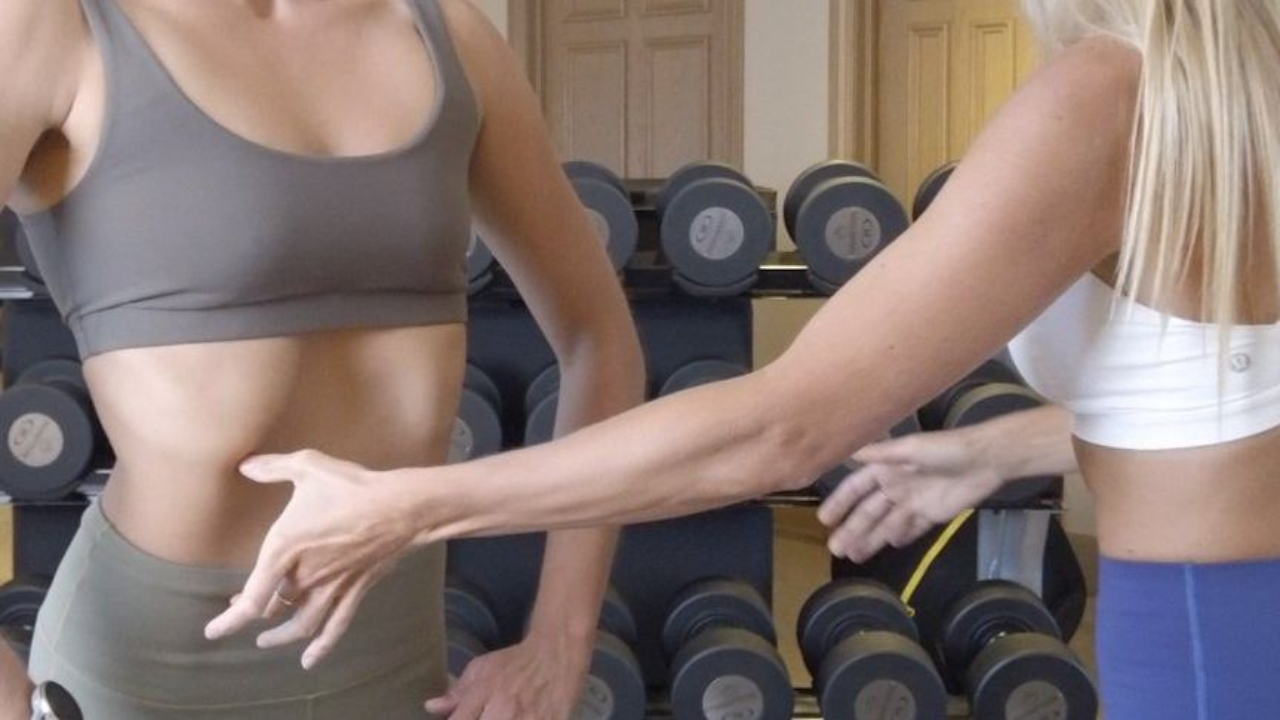Why isn’t my Belly more Hollow During Apnea?

Breathwork Mini Series
Part One: 6 Benefits of Hypopressive Breathing
Part Two: Why Hypopressive Breathing is the Best Exercise for Bloating
Part Three: How to Start a Hypopressive Training Practice
Part Four: Why isn’t my Belly more Hollow During Apnea?

Last week, I shared a tutorial on hypopressive training and a flow to help you get started with a regular hypopressive training practice. This week, I want to answer the most common question I get from people who are attempting hypopressive training for the first time. If you’ve tried the hypopressive flow I shared on the blog last week, you may have been asking yourself this same question:
“Am I still doing apnea correctly if my belly doesn’t look as hollow as the model in your videos?”
And the answer is yes! It takes time and repetition to strengthen the muscles of the core to achieve a strong enough suction for significant hollowing during apnea. The muscles of the throat, rib cage and diaphragm need to have a solid connection to coordinate the reflexive activation that occurs during apnea - this takes time and lots of practice. You also need to have really good control over your diaphragm to see a big hollowing during apnea. Many people require a regular focused breathing practice for a while in order to improve the connection to and coordination of their diaphragm necessary to create hollowing of the belly during apnea. Chronic tension in the diaphragm and abdominals is another reason the belly doesn’t hollow during apnea. People with core dysfunction often need to implement other therapeutic interventions to release the tension in their abdominals and diaphragm before significantly hollowing can occur during apnea.
The solution is simply to be patient and keep practicing! It’s absolutely normal if your belly is not very hollow when you first attempt apnea. In the photos below, I’m sharing what apnea looked like for me when I first started practicing and what it looks like now, after seven years of practice.


As you can see from these photos, my belly was not hollow at all in my initial attempts at apnea. It took me months to get some hollowing, and about a year to get significantly hollow. Remember, it is absolutely normal if your belly does not look as hollow as the photos and videos you see on my website and Instagram. A consistent practice is the key.
Therapeutic interventions to the spine, abdominals, diaphragm and pelvic floor are often necessary to implement as you are learning hypopressive training. There are certain breathing drills you can practice to prepare your body for hypopressive training and improve your ability to perform apnea. You can learn all of these in the Core Recovery Method® Online Program.
In the meantime, here are some things you can do now to help you improve your apnea during hypopressive training and allow your belly to get more hollow over time:
1. Make sure you are emptying your lungs completely before going into apnea.
2. Make sure you close your throat (aka epiglottis) before transitioning into apnea and keep it closed throughout apnea.
3. Make sure you are not inhaling through your nose during apnea.
4. Try to keep your upper abdominals and diaphragm more relaxed. If this is difficult, try a self massage to relax the diaphragm.


